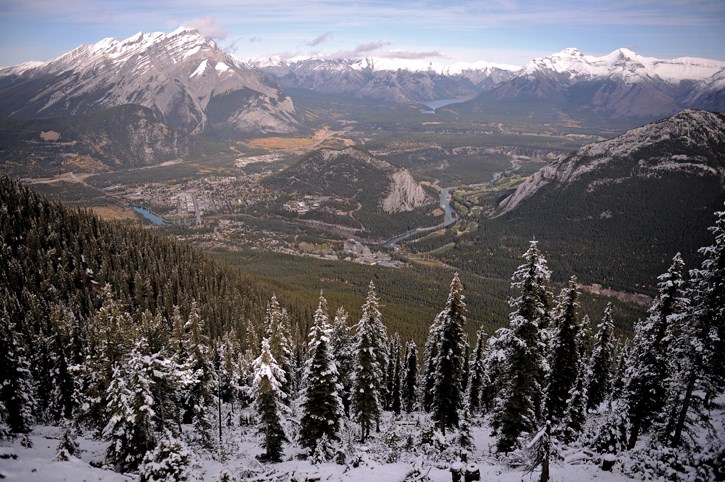BANFF – The aging forest on the west side of Sulphur Mountain near Banff will be logged to help reduce the threat of wildfire to the community.
Parks Canada is set to start work on the large, multi-year forest thinning project to create a fireguard, which includes logging smaller diameter trees, pruning individual trees to remove lower branches that can act as a ladder for a fire and removing fallen dead trees.
They say the aging forest in the Bow Valley, along with prevailing westerly winds, increases the risk and severity of wildfire to the Town of Banff and outlying commercial accommodations.
“This is one area that if a fire was coming from the west, it would provide fire managers something to work off in terms of fire suppression,” said Jane Park, fire and vegetation specialist for Banff National Park.
The biggest fire threat to Banff comes from the west down the Bow Valley, or from Spray River-Sundance, where the forest continues to age and thicken following a century of wildfire suppression before Parks began a prescribed fire program in the 1980s.
Effects of climate change on temperature, precipitation levels, and soil moisture are turning many forests into kindling and fires are expected to burn more frequently, with more intensity and become increasingly unpredictable.
Records show the last time a wildfire burned in this area was in 1881.
“It’s been 137 years and the historic fire cycle in this valley bottom area would be 50 to 100 years,” said Park.
“It’s an old forest, and that is very typical of a lot of forests in western North America.”
The project, which will be seen from the Trans-Canada Highway, has been designed to retain small clusters of trees to mimic natural disturbances, such as avalanche and fire.
Once finished, there will be a noticeable difference in the area compared to what it looked like before.
The forest would be more open, allowing more sunlight in, which, over time, will allow for more grass and shrubs to flourish.
Park said the work also aims to improve the area’s biodiversity and, in turn, create quality grizzly bear habitat away from the townsite and the train tracks.
She said some of the bears fitted with GPS collars for the Canadian Pacific Railway-Parks Canada study – which looked at ways to reduce the number of bears being killed on the tracks – used this area.
“This would provide an area that would have good forage and hopefully would draw bears to an area that’s not directly adjacent to where people are,” said Park.




